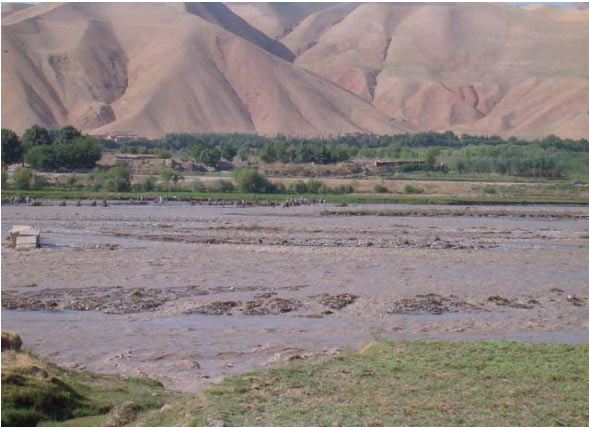
Water Resources Management in Afghanistan: The Issues and Options
Modern Irrigation Systems
Formal surface water systems without storage:
They have a permanent intake structure, which is operated and maintained by the Irrigation Department. The management of the irrigation scheme itself follows the rules of the large-scale traditional surface water schemes described above. However, the significant difference is that the regulation of water flow to the system depends on the interaction between government authorities and the village communities.
Formal surface water systems with storage:
Organized large-scale irrigation system development is a relatively recent innovation (1960¬1978). However, by the late1970s five large-scale modern irrigation systems had been built and were in operation. Land tenure was different from traditional systems. Parts of the schemes were operated under private land ownership agreements, while others were operated as State farms “owned” by the government. The Government heavily subsidized these schemes and farmers were given very limited choice of crop selection or farming practice.
Formal ground water systems:
Very little is known about the irrigation schemes supplied by ground water from deep and shallow wells. In Khost/Paktia province, surface water irrigation schemes were supplied by some 100 deep wells until the late 1980s. In the 1970s about 100,000 ha are said to have been under sprinkler irrigation (private and government owned) and plans existed to introduce drip irrigation. In few cases, particularly in the lower reaches of large traditional schemes where water shortage is common, individual farmers undertook irrigation from shallow wells.
Cropping intensity varies widely from system to system according to the scarcity of water versus land. It reaches 200 per cent in the upper part of the irrigation schemes while in the lower parts up to two thirds of the command area is kept fallow each year on a rotational basis. Flood damages to irrigated land are common, particularly in the large schemes supplied by rivers changing their course frequently due to their high sediment load and unfavorable geo-morphological conditions.

Source: Water Resources Management in Afghanistan: The Issues and Options by Asad Sarwar Qureshi, IWMI, Working Paper 49
